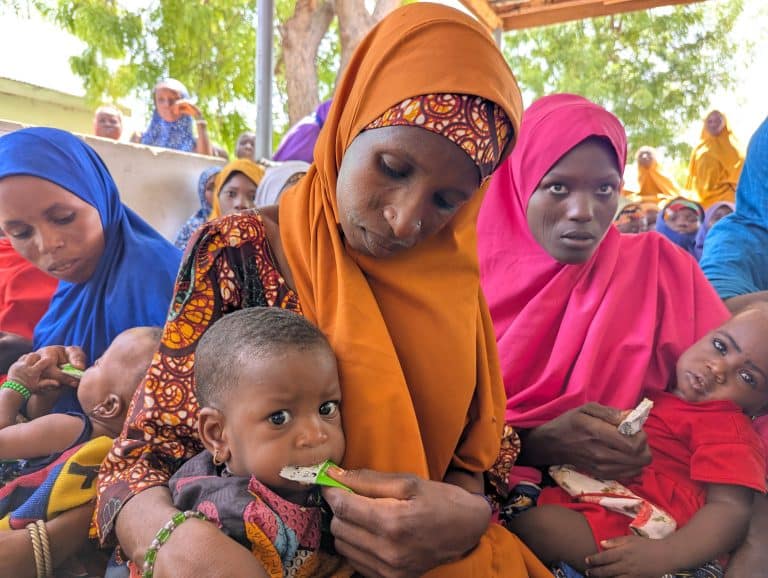As Sudan grapples with the world’s largest humanitarian crisis, a relentless cholera outbreak is sweeping across the nation, with nearly 50,000 suspected cases and over 1,000 lives lost in 2025.
Why is cholera spreading so quickly?
In North Darfur, one of the regions most affected by the conflict, insecurity intensified in early 2025. Many families fled the capital, El Fasher as a result, walking westward to Tawila. This little town now hosts the largest number of internally displaced persons in North Darfur. On top of already extremely difficult living conditions, cholera is spreading through the city with the arrival of the rainy season.
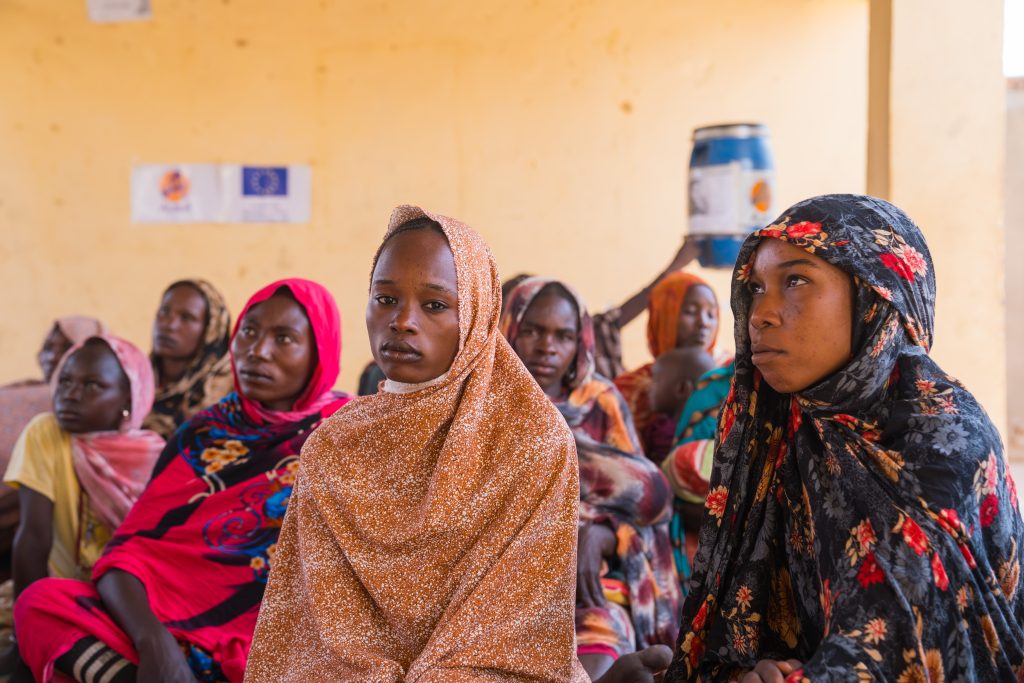
Cholera is a bacterial infection transmitted through contaminated water or food, or through poor hygiene conditions. This disease manifests through severe diarrhea, vomiting, muscle cramps caused by dehydration, intense thirst, and extreme fatigue and weakness. Treatment primarily relies on rehydration. Depending on the severity of the case, oral rehydration, intravenous rehydration, or antibiotics are administered. Cholera can be fatal if dehydration is not treated promptly.
Rain, flooding, overcrowding, massive movement of internally displaced populations, poor hygiene in living areas, and limited access to drinking water are worsening the situation. During the rainy season, runoff from sanitation facilities flows into rivers, contaminating the water consumed in the displacement sites, fueling the spread of cholera. The situation is all the more concerning as the rainy season is making it difficult for NGOs to deliver supplies.
Even in refuge, displaced families face cholera
Myriam and Ahmed have contracted cholera and are being treated by ALIMA medical teams, in Tawila.
Myriam, 13, arrived at ALIMA’s cholera treatment unit in Tawila with her older sister Suraiya. They had lost their mother during an attack on the Zamzam camp in El Fasher and fled on foot, walking 70 km in extreme heat and insecurity before settling in Tawila.
Myriam later became sick with vomiting and diarrhea after drinking contaminated water in the displacement site. She was admitted to ALIMA’s treatment unit, where she received intravenous rehydration to treat her severe dehydration. She also received psychosocial support and health education on how to prevent cholera.
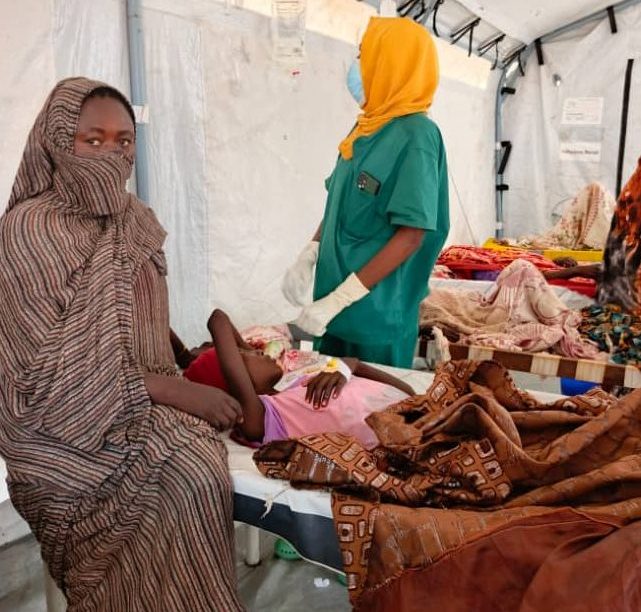
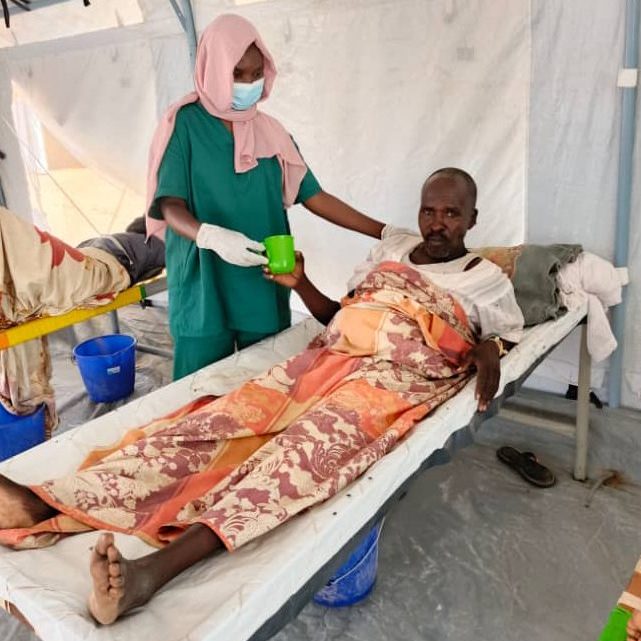
Ahmed Mohammed Adam, 45, also contracted cholera. After fleeing El Fasher on foot in extreme heat and insecurity, he arrived in Tawila. Soon after drinking tea at the market, he began to suffer from vomiting and diarrhea.
He was taken to an ALIMA health facility, where a rapid test confirmed cholera. He was immediately treated with Oral Rehydration Solution to replace lost fluids, along with some medications. Ahmed recovered within 48 hours and was able to return home.
How does ALIMA respond to a cholera outbreak?
In Tawila, alongside its ongoing emergency response, in July, ALIMA commenced a cholera response including a dedicated Cholera Treatment Unit and five oral rehydration points.
Prevention is just as important as treating the patients. To prevent the disease from spreading further in Tawila, activities are being implemented such as:
- Community-awareness sessions.
- Training sessions for Ministry of Health staff on infection prevention and control.
- Mental health consultations to the patients in need.
Since the start of ALIMA’s cholera response, a total of 1,033 patients have been treated, with an average of 27 daily admissions, like Myriam and Ahmed.
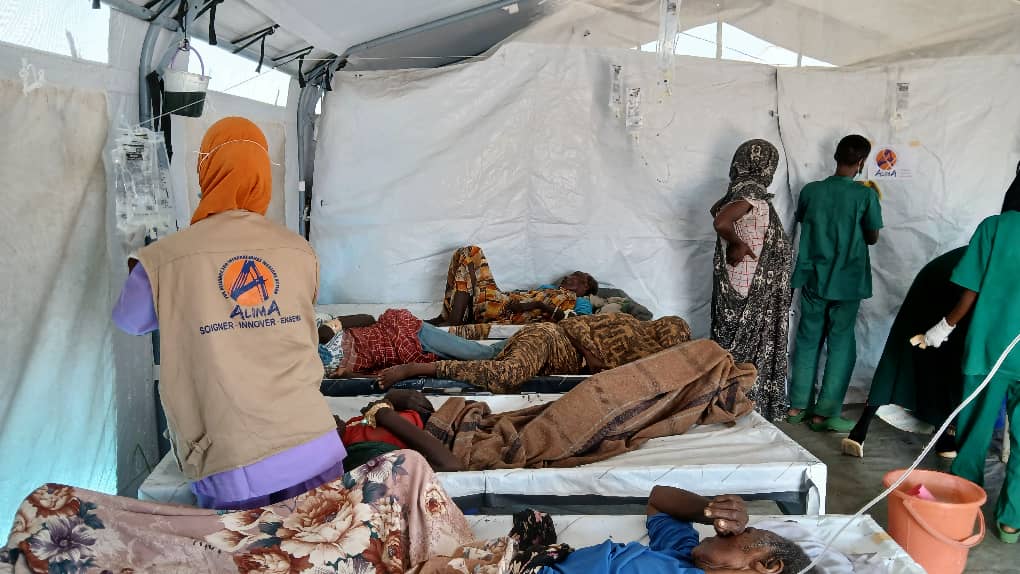
Before the cholera outbreak, the health system in Tawila was already under heavy strain, fighting hunger and malnutrition. Already overwhelmed medical teams, are now facing a life-threatening disease that continues to spread. Sudan, already struggling with conflict and limited resources, now faces the looming threat of a health crisis that could affect thousands of lives.
Some numbers that reflect the impact in Sudan
- 51.7 million people living in this country
- 560,000 people living in Tawila
- Severe hunger nearly doubled from 14% in 2024 to 25.9% in early 2025 (UNICEF, May 2025)
- This cholera outbreak is affecting young adults in most cases (23%) followed by children under 5 years (18.9%), (ECHO, August 2025)
- In the past two months, over 1,000 people have been admitted with cholera symptoms, in ALIMA’s Tawila facilities
ALIMA emergency medical response projects in North Darfur are funded by humanitarian funding from the European Union and the Gates Foundation
Cover photo: ©AFP




